At A Glance
Infillion and Experian collaborate to help advertisers connect with audiences across devices and channels, as cookies and mobile identifiers disappear. By integrating Experian's Digital Graph and Offline Identity Resolution, Infillion strengthens identity connections, improves campaign reach, and enhances audience engagement across CTV, mobile, and web.In our Ask the Expert Series, we interview leaders from our partner organizations who are helping lead their brands to new heights in AdTech. Today’s interview is with Ben Smith, VP of Product, Data Products at Infillion.
Adapting to signal loss
What does the Experian–Infillion integration mean for advertisers looking to reach audiences as signals fade?

As cookies and mobile identifiers disappear, brands need a new way to find and reach their audiences. The Experian integration strengthens Infillion’s XGraph, a cookieless, interoperable identity graph that supports all major ID frameworks, unifying people and households across devices with privacy compliance, by providing a stronger identity foundation with household- and person-level data. This allows us to connect the dots deterministically and compliantly across devices and channels, including connected TV (CTV). The result is better match rates on your first-party data, more scalable reach in cookieless environments, and more effective frequency management across every screen.
Connecting audiences across channels
How does Experian’s Digital Graph strengthen Infillion’s ability to deliver addressable media across channels like CTV and mobile?
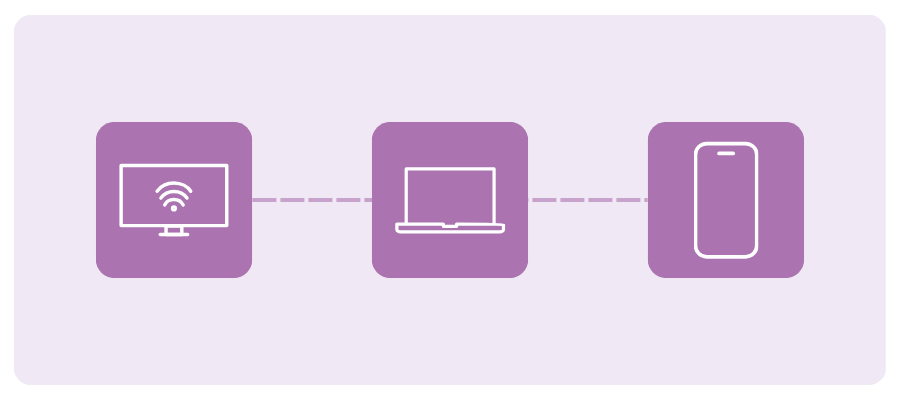
Experian strengthens the household spine of XGraph, which means we can accurately connect CTV impressions to the people and devices in that home – then extend those connections to mobile and web. This lets us plan, activate, and measure campaigns at the right level: household for CTV, and person or device for mobile and web. The outcome is smarter reach, less waste from over-frequency, and campaigns that truly work together across channels.
The value of earned attention
Infillion has long championed “guaranteed attention” in advertising. How does that philosophy translate into measurable outcomes for brands?
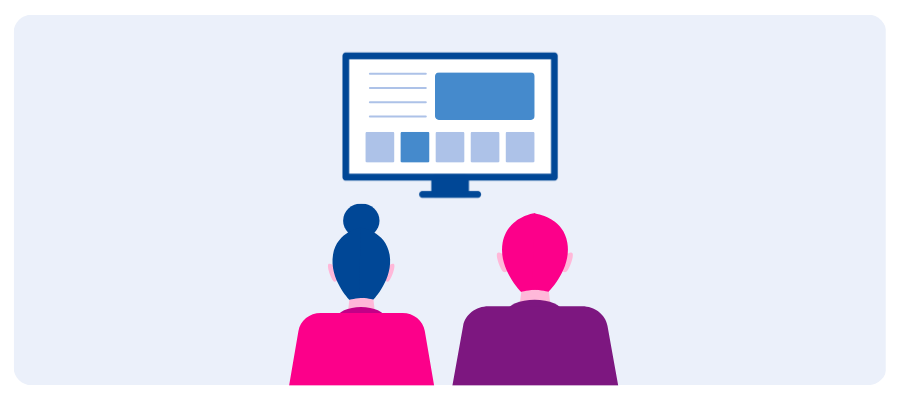
Our engagement formats, such as TrueX, are based on a simple principle: attention should be earned, not forced. Viewers choose to engage with the ad and complete an action, which means every impression represents real, voluntary attention rather than passive exposure. Because of that, we consistently see stronger completion rates, deeper engagement, and clearer downstream results – like lower acquisition costs, improved on-site behavior, and measurable brand lift.
To take that a step further, we measure attention through UpLift, our real-time brand lift tool. UpLift helps quantify how exposure to a campaign influences awareness, consideration, or purchase intent, providing a more complete picture of how earned attention translates into business impact.
Creative innovation and location insights
Beyond identity resolution, what are some of Infillion’s capabilities, like advanced creative formats or location-based insights, that set you apart in the market?
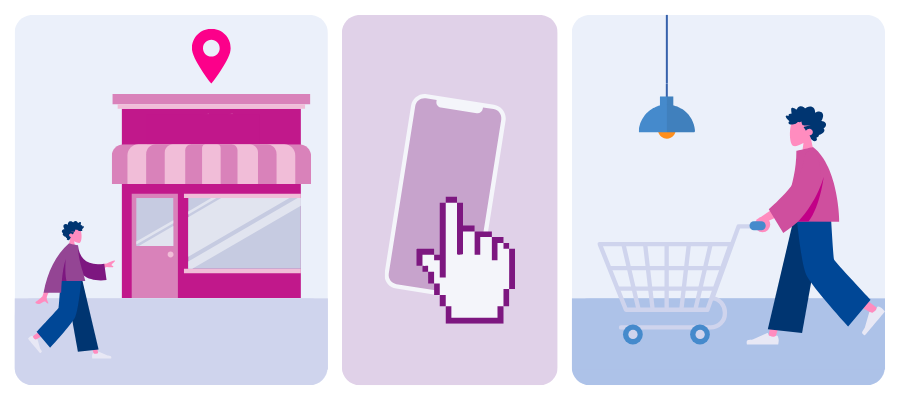
One key area is location intelligence, which combines privacy-safe geospatial insights with location-based targeting through our proprietary geofencing technology. This allows us to build custom, data-driven campaigns that connect media exposure to real-world outcomes – like store visits and dwell time – measured through Arrival, our in-house footfall attribution product.
We also build custom audiences using a mix of zero-party survey data, first-party location-based segments, and bespoke audience builds aligned to each advertiser’s specific strategy.
Then there’s creative innovation, which is a major differentiator for us. Our high-impact formats go beyond static display, such as interactive video units that let viewers explore products through hotspots or carousels, rich-media ads that feature polls, quizzes, dynamic distance, or gamified elements, and immersive experiences that encourage active participation rather than passive viewing. These creative formats not only capture attention but also generate deeper engagement and stronger performance for a variety of KPIs.
Future ready media strategies
How does Infillion’s ID-agnostic approach help brands future-proof their media strategies amid ongoing privacy and tech changes?
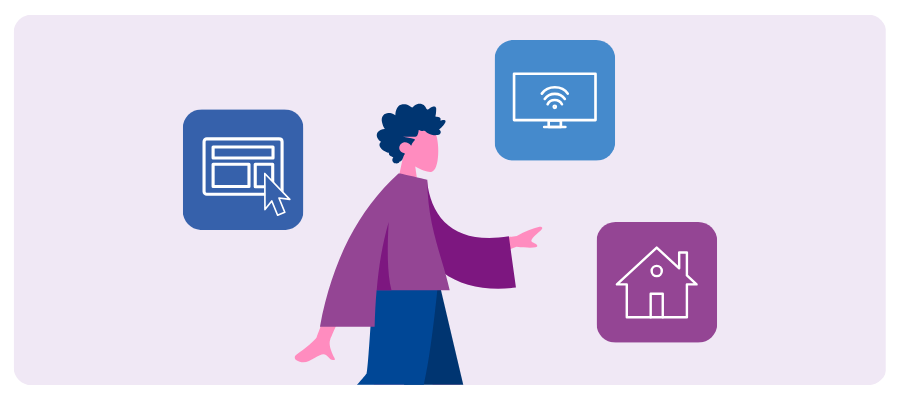
We don’t put all our eggs in one basket. XGraph securely unifies multiple durable identifiers alongside our proprietary TrueX supply to strengthen CTV household reach. This agnostic design allows us to adapt as platforms, regulations, and browsers evolve – so you can preserve reach and measurement capabilities without getting locked into a single ID or losing coverage when the next signal deprecates.
Raising the bar for media accountability
Looking ahead, how is Infillion evolving its platform to meet the next wave of challenges in audience engagement and media accountability?
From an engagement standpoint, we’re expanding our ability to support the full customer journey, offering ad experiences that move seamlessly from awareness to consideration to conversion. That includes smarter creative that adapts to context, intelligent targeting and retargeting informed by real data, and formats designed to drive measurable outcomes rather than just impressions.
When it comes to accountability, we’re ensuring that measurement is both flexible and credible. In addition to our proprietary tools, we partner with leading third-party measurement providers to validate results and give advertisers confidence that their investment is truly performing. Within our DSP, we emphasize full transparency and log-level data access, ensuring advertisers can see exactly what’s happening on every impression.
All of this builds toward the next era of agentic media buying – one enabled by our MCP suite and modular, component-based tools. This evolution brings greater accountability and next-generation audience engagement to an increasingly automated, intelligent media landscape. Our goal is to help brands connect more meaningfully with audiences while holding every impression – and every outcome – to a higher standard of transparency and effectiveness.
Driving impact across the funnel
What is a success story or use cases that demonstrate the impact of the Experian–Infillion integration?
We recently partnered with a national veterans’ organization to raise awareness of its programs for injured or ill veterans and their families. Using the Experian integration, we combined persistent household- and person-level identifiers with cross-device activation to reach veteran and donor audiences more precisely across CTV, display, and rich media. The campaign achieved standout results – industry-leading engagement rates, a 99% video completion rate, and measurable lifts in both brand awareness (3.6 % increase) and donation consideration (13.7% lift). It’s a clear example of how stronger identity and smarter activation can drive meaningful outcomes across the full funnel.

Contact us
FAQs
Identity resolution ensures accurate connections between devices, households, and individuals. Experian’s Offline Identity Resolution and Digital Graph strengthen these connections for improved targeting and consistent measurement across CTV, mobile, and web.
Solutions like Experian’s Digital Graph enable brands to connect first-party data to household and person-level identifiers, ensuring scalable reach and compliant audience targeting legacy signals fade.
Focusing on earned attention (where audiences actively choose to engage) leads to stronger completion rates, improves on-site behavior, and drives measurable increases in brand awareness and consideration.
By linking CTV impressions to households and extending those connections to mobile and web, Experian’s identity solutions ensure campaigns work together seamlessly, reducing over-frequency and improving overall reach.
About our expert

Ben Smith, VP Product, Data Products
Ben Smith leads Infillion’s Data Products organization, delivering identity, audience, and measurement solutions across the platform. Previously, he was CEO and co-founder of Fysical, a location intelligence startup acquired by Infillion in 2019.
About Infillion

Infillion is the first fully composable advertising platform, built to solve the challenges of complexity, fragmentation, and opacity in the digital media ecosystem. With MediaMath at its core, Infillion’s modular approach enables advertisers to seamlessly integrate or independently deploy key components—including demand, data, creative, and supply. This flexibility allows brands, agencies, commerce and retail media networks, and resellers to create tailored, high-performance solutions without the constraints of traditional, all-or-nothing legacy systems.
Latest posts
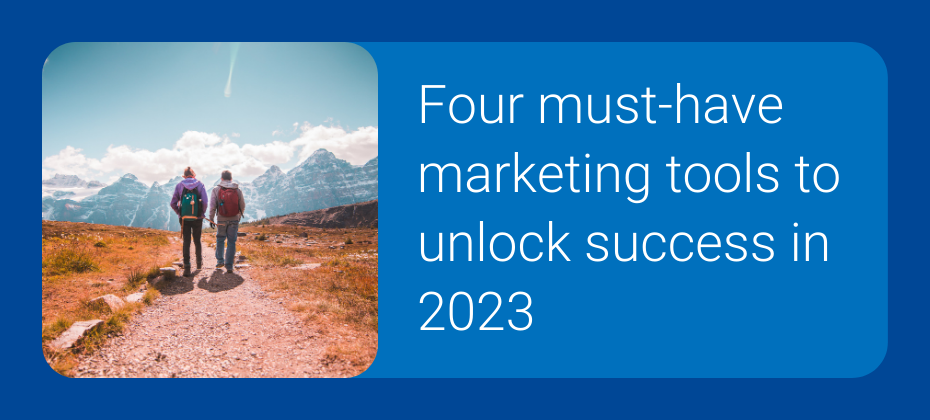
As a marketer, you know that the digital landscape is always changing. That's why it's important to make sure you're equipped with the right tools every step of the way – no matter how rapidly things change. You want to ensure your strategies and tactics stay ahead of any changes in technology or consumer behavior, so what new marketing strategies should be in your toolbox in 2023? Discover what industry leaders from Experian, Adweek, FreeWheel, Tubi, and Instacart had to say about what should be in every marketer's toolbox in 2023 at Cannes. Keep reading to learn the top four new marketing strategies you need in your marketing toolbox for 2023 and beyond. 1. A plan for signal loss The first item you should have in your marketing toolbox is a plan for signal loss. The phasing out of third-party cookies presents both a challenge and an opportunity. This shift not only poses challenges but also opens up opportunities for alternative strategies. On the one hand, it makes it more difficult to track users across channels and measure the effectiveness of marketing campaigns. On the other hand, it forces marketers to focus on building relationships with their customers and collecting first-party data. Consumer behavior is changing When we consider signal loss in a traditional sense, we think of the implementation of iOS 14, where we couldn't track click-based data from campaigns. It's important to reflect on the fact that the paid media ecosystem needed to adapt to new consumer realities. Younger demographics are less likely to click on ads and instead engage in video environments. They discover brands through platforms like TikTok or Instagram. It's crucial to understand how people behave, where they discover products, and where influence takes place. This understanding becomes even more vital when targeting a young audience demographic. Four things to consider when planning for signal loss There are four things you should consider when building out a plan to address signal loss and fragmentation. Channel diversification You need to reach your customers on the channels where they are already spending time, such as social media, email, and your own website. You should work with platforms that have first-party data to understand how your customers interact with your brand. Data privacy You need to be transparent about how you are collecting and using customer data. You should also anonymize data whenever possible. First-party data First-party data is now more crucial than ever, awakening its importance in shaping our actions. The combination of channel diversification and first-party data will be essential in the years to come. By focusing on these two areas, you can build stronger customer relationships and create more effective marketing campaigns. Contextual targeting Contextual targeting is emerging as a viable method to deliver more relevant content to your intended audience. By embracing signal loss, the alternative new marketing strategies that are emerging as a result, and adopting a privacy-centric mindset, you can navigate cookie deprecation. 2. Collaboration The second item you should have in your marketing toolbox is collaboration within the AdTech ecosystem. To address signal loss and changes in privacy, moving toward a more collaborative, holistic marketing ecosystem is key. Two ways we can achieve better collaboration Here are two ways we can create better collaboration in the AdTech ecosystem. Enable interoperability We should aim to create an ecosystem that fosters collaboration between marketers, publishers, advertisers, ad tech companies, and more. When we enable seamless interoperability, everyone can use the best data available. Use clean rooms We are witnessing a growing trend of collaboration between parties, where buyers and sellers share data in these secure environments. Clean rooms can help us develop data strategies in a controlled manner. 3. Generative artificial intelligence (AI) The third tool you should have in your marketing toolbox is generative AI. Benefits of implementing AI There are three main benefits to implementing AI within your marketing strategy. Enables creativity Although AI and machine learning have long been part of our toolbox, this moment marks an extraordinary acceleration that expands our capabilities. Copywriters can now create visuals, and art directors can write compelling copy. It's an extension of what we're capable of, potentially alleviating the burden of repetitive tasks and enabling more time for collaboration, creativity, and strategic thinking. By embracing generative AI, we can preserve valuable talent, prevent burnout, and invigorate the advertising industry. Enables more personalization The rise of personalization with AI has significantly increased the demand for tailored experiences. People now willingly allow AI agents to read their emails, hoping for quicker and easier responses. This shift signifies a change in the previous emphasis on privacy and consumer preferences. Consumers now see the value in exchanging personal information for more targeted services. E-commerce has already witnessed this transformation with customized ads based on individual preferences and behaviors. For instance, if a CPG brand notices you're not purchasing meat, they won't serve you ads for meat products. However, it's crucial to strike the right balance between being useful and intrusive. Users want relevant information that aligns with their needs without feeling intruded upon. As we navigate this path, we must ensure that personalization remains beneficial and respectful of user preferences. Helps drive impactful results and customer satisfaction The tool is a perfect analogy for improving your job performance and business operations. Having the right data input to feed the machine is crucial, just like using the right ingredients to cook a perfect meal. Keeping the consumer in mind throughout the process is key. You can ensure customer satisfaction by putting the right ingredients in and allowing the machine to work its magic. Scaling up, repeating, and refining the process will drive impactful results. 4. First-party data The fourth item you should have in your marketing toolbox is first-party data. Benefits of implementing a first-party data strategy Moving from a third-party cookie world to a first-party cookie world brings about significant transformation. Here are two benefits of implementing a first-party data strategy. Greater accuracy The shift to first-party cookies ensures greater accuracy, enabling us to establish critical mass through secure partnerships. This empowers us to strengthen and refine our personalization capabilities, much like Amazon's ability to anticipate customer needs before they arise. When you can predict and understand customer behaviors with remarkable precision, you can reach your customers with tailored and creative ads. "Building a robust first-party data strategy should be a central discussion for marketers, involving key stakeholders such as CEOs and CMOs. Quality and precise data are paramount, and while first-party relationships with consumers form the foundation, even established brands benefit from strategic partnerships. Together, we can unlock the potential of accurate and meaningful data-driven marketing."jeremy hlavacek, cco, experian Identify high-growth audiences First-party data can help you identify audiences with the greatest growth potential, ultimately optimizing marketing dollars for greater efficiency. Watch our Cannes panel for more new marketing strategies for 2023 We hosted a panel with Adweek in Cannes that covered what should be in every marketer's toolbox this year. Check out the full recording below to hear from leaders at Tubi, Freewheel, Instacart, Adweek, and Experian. Watch now Check out more Cannes content: Our key takeaways from Cannes Lions 2023 Insights from a first-time attendee Exploring the opportunities in streaming TV advertising The future of identity in cookieless advertising Maximize ad targeting with supply-side advertising Follow us on LinkedIn or sign up for our email newsletter for more informative content on the latest industry insights and data-driven marketing. Get in touch Latest posts
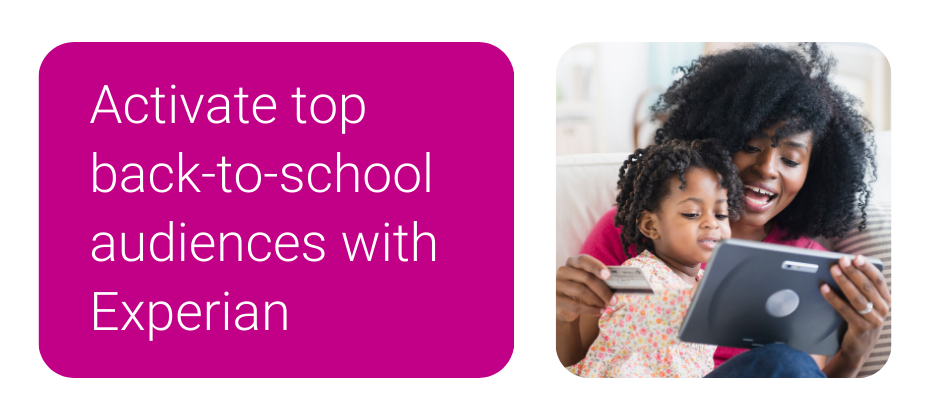
It's back-to-school season. Knowing your target audience is an essential piece of planning a successful back-to-school marketing campaign. To get the most out of your marketing investment this back-to-school season, it’s important to understand how to identify and segment back-to-school shoppers so you can make sure that the right message reaches the right group at the right time. In this blog post, we'll cover how you can segment your target audience to create and deliver custom messaging tailored to individual groups. We'll discuss segmentation methods that uncover: Who they are Where they live What type of person they are How they behave and spend Here are our tips to accurately define and target your back-to-school marketing audience. Maximize back-to-school marketing with customer segmentation Customer segmentation is the process of dividing your audience into smaller groups based on common characteristics such as demographics, behaviors, psychographics, geographics, and more. The purpose of customer segmentation is to create a more personalized and effective approach to marketing. By understanding the unique needs and preferences of each segment, you can tailor your messaging, campaigns, and content to resonate with your customers on a deeper level. Benefits of customer segmentation Three benefits of customer segmentation include: Improved audience targeting Higher engagement rates Increased ROI Instead of addressing your entire customer base with generic messaging, segmentation enables you to deliver custom campaign messaging that speaks directly to each group. This personalized approach helps build trust and loyalty with your customers over time. Customer segmentation also allows you to better understand your customers, their motivations, and pain points, ultimately leading to more effective marketing campaigns. Types of customer segmentation When it comes to segmenting your customers, there are several methods to consider. By experimenting with different approaches, you can find the best fit for your business. Keep in mind that the most effective customer segments will differ depending on the industry. Let's review four types of customer segmentation that you can implement as part of your back-to-school marketing strategy. 1. Demographic segmentation Demographic segmentation categorizes consumers into groups based on shared demographic characteristics such as age, gender, income, occupation, marital status, and family size. For example, targeting college students during the back-to-school season with promotions on laptops is likely to be more effective than targeting retirees who may have less interest in such products. 2. Behavioral segmentation Behavioral segmentation divides customers into groups based on their demonstrated behaviors. This method sorts customers by their knowledge of products or services, attitudes toward brands, likes/dislikes about offers, responses to promotions, purchasing tendencies, and usage of products/services. Behavioral segmentation can help you identify the highest-spending customer segments, so you can budget and target more effectively. Through this type of segmentation, you can analyze each group's patterns, discover trends, and plan informed marketing moves for the future. In a back-to-school campaign, you could use behavioral segmentation to identify students who prefer to shop locally. You could then target students who value supporting local businesses and emphasize the importance of buying from local retailers during the back-to-school season. 3. Geographic segmentation Geographic segmentation involves dividing your target market into groups based on their physical locations. Geographic segmentation reveals aspects of a local market, including physical location, climate, culture, population density, and language. In a back-to-school campaign, you could use geographic segmentation to identify target audiences in colder climates who may be more interested in winter clothing and gear. You could also use geographic segmentation to target students living in college towns with messaging that speaks directly to campus life. 4. Psychographic segmentation Psychographic segmentation groups customers based on psychological factors such as lifestyle, interests, personality, and values. In a back-to-school campaign, you could use psychographic segmentation to target students who value sustainable practices, promote eco-friendly products, or offer incentives for recycling and reusing items. Watch our 2024 video for tips from industry leaders for back-to-school In our new Q&A video with Experian experts, we explore changing consumer behaviors surrounding back-to-school shopping in 2024. In the video, we discuss: Anticipated shifts in consumer behaviors and shopping habits Tactics we predict marketers will employ to navigate signal loss Which channels will be the most successful And more! Watch now Get in touch Latest posts
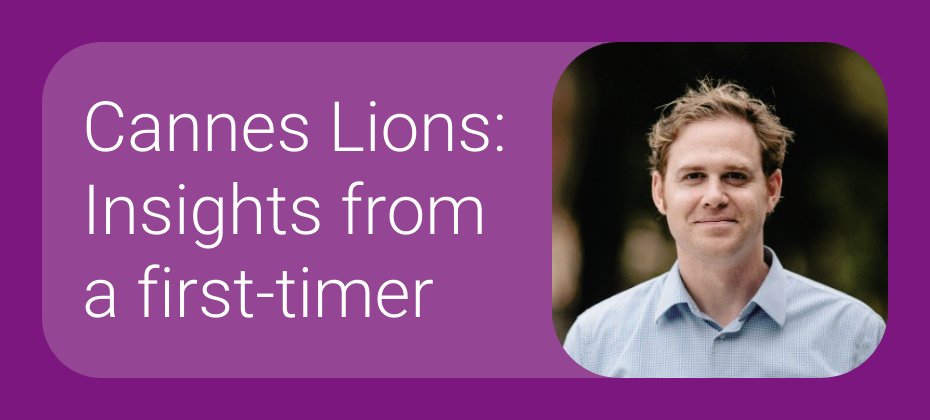
As I walked onto the buzzing streets of Cannes for the first time, my senses were immediately captivated by the energy that filled the air. I'd heard plenty about Cannes Lions, the globally revered International Festival of Creativity, but being in the midst of it all was an entirely different ballgame. 1. A visual extravaganza From the moment I woke up from my two-hour nap, (Seattle was a long way to travel to Cannes), I was awestruck by the grandeur of the festival. Usually known for its tranquil beauty, the city was alive and brimming with imagination. Massive installations, eye-catching billboards, and immersive media experiences were scattered over the two-kilometer stretch of La Croisette, transforming the city into a canvas of creativity. I saw firsthand how abstract concepts could be turned into palpable realities, especially those of Spotify, Yahoo!, and Stagwell's Sport Beach with their basketball court with stadium seating setup. 2. Nuggets of wisdom shared in panels The festival's days were jam-packed with thought leadership panels – each a masterclass in the ever-evolving universe of AdTech. Fortunately, as a member of the Experian team, I didn't have to travel far for unique panels; we hosted four panels throughout the week, and I was immersed in dynamic discussions about new trends, groundbreaking ideas, and the challenges ahead. One recurring theme that resonated with me was the intricacies of authentically connecting with consumers. Finding genuine human connections amidst digital chaos can be challenging in today's tech-driven world. These dialogues provided incredible insights into how we could maintain the delicate balance between personalization and privacy and effectively use artificial intelligence (AI) to enhance customer engagement without compromising the human essence in advertising. Watch our panels 3. Connect with your peers If Cannes Lions is known for anything apart from its creative inspiration, it's the unparalleled networking opportunities. The festival allowed me to interact with professionals from all corners of the world. Each exchange was not merely about exchanging contact details but building meaningful relationships. Will these first arcs lead to meaningful friendships? I sure hope so. 4. A comprehensive learning opportunity The most crucial aspect of the festival was the immense opportunity it offered for learning. I found myself constantly absorbing new information and insights from the panels, every conversation, and every chance meeting. 5. Juggle your time Effective time management was crucial for maximizing my Cannes experience, with many things happening concurrently. I would give myself a B- for this. During the day, when I had some downtime, I could have ventured to another panel, attended a networking event, or taken in a view of the city I didn't get. That's the biggest challenge, and the beauty of Cannes Lions is its unique blend of professional learning opportunities set against the backdrop of a picturesque seaside town, but how do you do it all? 6. Relish the experience My week at Cannes was filled with intense learning, insightful conversations, and eye-opening experiences, leaving me mentally drained and intellectually stimulated (I think those can happen concurrently). The festival left me with a renewed appreciation of why we do what we do in the AdTech industry: supporting the pursuit of creativity, the drive for innovation, and the desire to forge meaningful connections. Cannes Lions was more than just a festival – it was a week of stepping out of my comfort zone, gaining deep insights, and establishing relationships that I hope will last a lifetime. As I boarded my flight out of Nice, surrounded by adults with layers of event access bracelets, I was inspired and stacked with knowledge and ideas that will help drive meaningful marketing opportunities with our content and partnerships. The grandeur, the learning sessions, the networking, and the profound lessons exceeded all my expectations. My week at Cannes Lions was unique, intense, insightful, and unforgettable. It was an experience I can't wait to repeat! Follow us on LinkedIn or sign up for our email newsletter for more informative content on the latest industry insights and data-driven marketing. Get in touch Latest posts